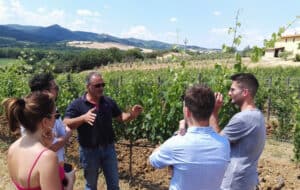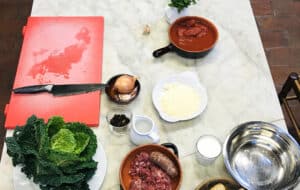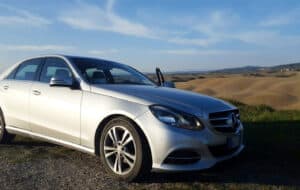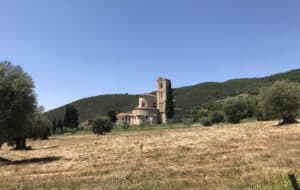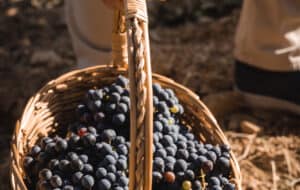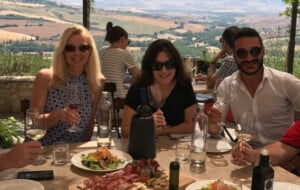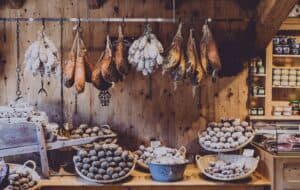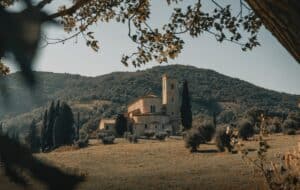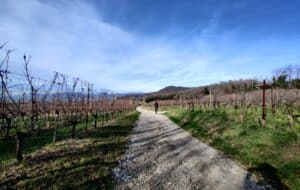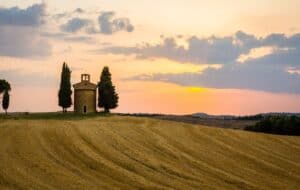Montalcino is an enchanted land, a terrace that looks over Tuscany from which you can admire the Val d’Orcia in continuous iridescent views of green, yellow, ochre, blue, and brown.
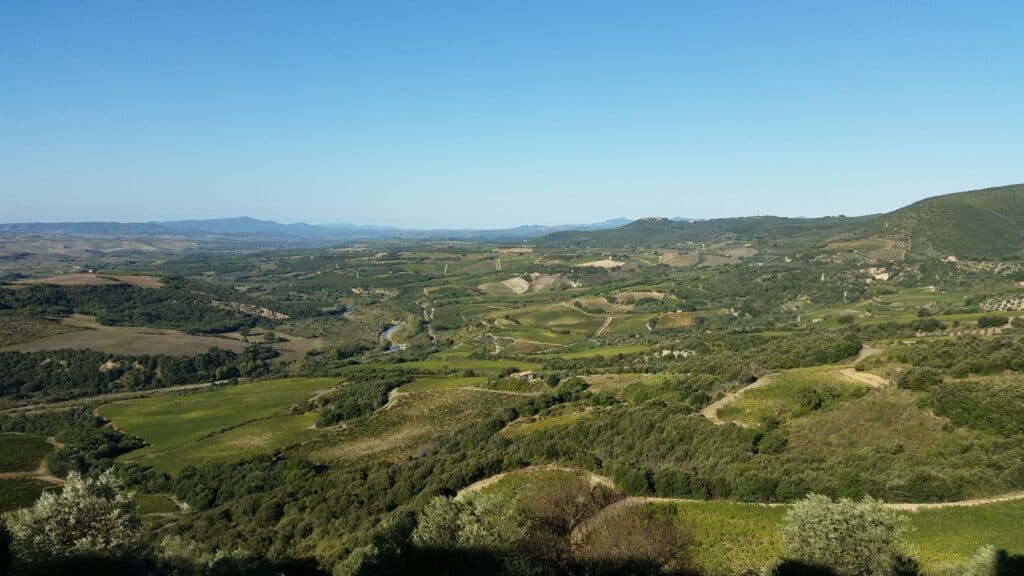
The landscape of Montalcino always looks like a sea rippled by the wind of fancy where each season provides a different wonder and never ceases to amaze you; it always feels just like the first time.
From the meeting of two polar opposites, old Montalcino linked to traditions and the foreigner with his bizarre innovations, exchanges, and fusion, comes the idea of the magical and extraordinary land of Tuscany which has charmed people from all over the world, which you breathe in the air, see in things, and live everyday in Montalcino.
Its name derived from the Latin “mons ilcinus”, mount of holm oak, a strong and noble variety of oak tree commonly found in the woods of the territory.
Of course, Montalcino is famous all over the world for its wine, Brunello, a 100% Sangiovese-based, long-aging red wine. But on this page, we want to focus on all the other things you will be able to find locally.
The Hills and the Mountains
Set atop a higher range of hills than the ones in the surrounding Val d’Orcia and the nearby Crete Senesi, Montalcino extends over 240 square kilometers of territory covered by woods, vineyards, olive groves, and grazing pasture. The territory reaches across the Orcia, Ombrone, and Asso Rivers and comprises numerous hamlets at the southern tip of the province of Siena, before Monte Amiata. It is a perfect starting point for many excursions on foot, by bike or by car.
The Old Town
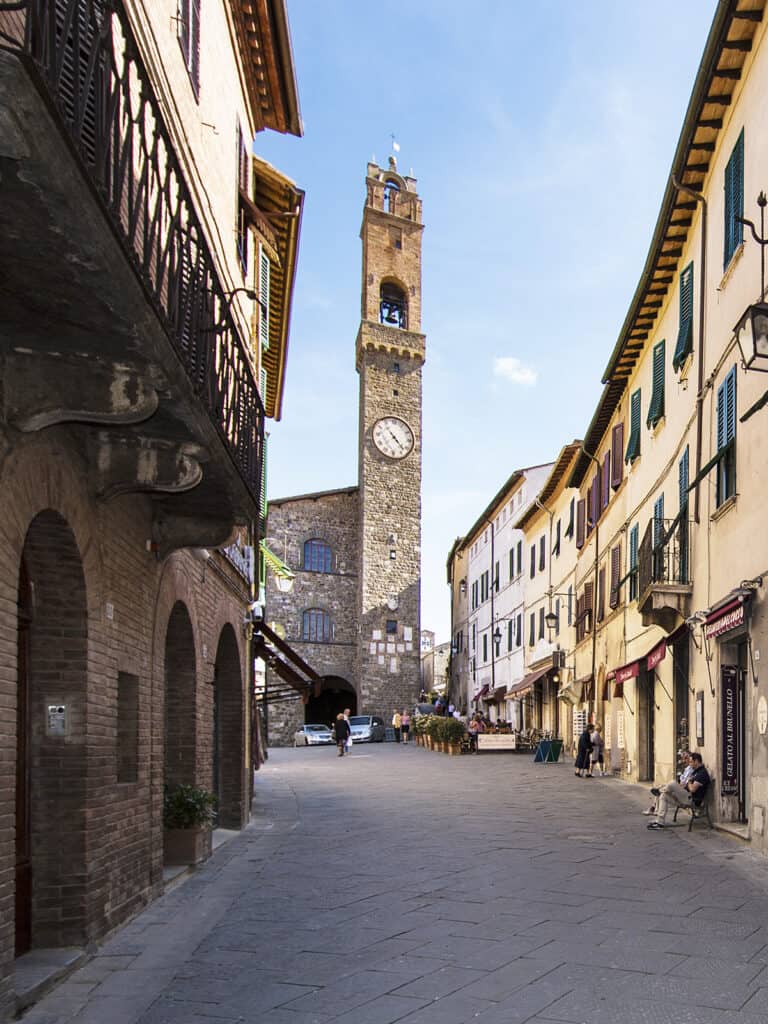
In the Middle Ages, tanneries thrived as a trade in Montalcino: many leather workshops were well-known for their quality. Weaving, ceramics, and carpentry were other artisan activities of top quality that Montalcino was renowned for. Later on, agricultural vocations got the upper hand in Montalcino with its olive trees, grain, vines, and bees.
About 2.000 people live in the old part of town, mostly during the summer. The center is a wonder in stone, a weaving of lanes and flowering piazzas where there are artisan shops, Osteria, the traditional restaurants, and grocery shops selling cheese, salami, meat, honey, and pastries. Here, you can stroll around for hours for shopping or tasting wines by the glass in one of the many Enoteca, the wine shops, or you can stop for a rest at one of the small Italian style cafés and feel like a local.
One of the more convenient parking lots in the town is just outside the village, below the roundabout close to the Fortress. From here, you can easily walk up to the square of the XIII century walls that encircle the village and give rise to the pentagonal Fortress from 1361. The “Fortezza” has a nice garden where you can rest under the shade of the trees and a unique view can be admired from the ramparts on a clear day. Tickets can be purchased at the wine shop inside the Fortress.
Magnificent and majestic, sitting between Piazza del Popolo and Piazza Garibaldi (also known as “Piazza Padella”) is the old City Hall, the former Palazzo dei Priori with its very high medieval tower and treasured bell, the Campanone that marks village life with every toll. On its west wall, close to the she-wolf statue, there are the commemorative tiles for Brunello vintages, designed every year by a different artist. If you are a wine lover, you must stop and take a picture here!
Montalcino is also rich in churches, a treasure chest filled with works of art and part of the life of the town’s quarters. Among the most important are Sant’Agostino, Sant’Egidio, San Francesco, the Cathedral (San Salvatore), San Lorenzo in San Pietro and the Sanctuary of the Madonna del Soccorso. The former convent of Sant’Agostino is the current home of the Civic and Diocesan Museum of Sacred Art of Montalcino as well as of the Ocra Association which organizes many cultural events and festivals during the year.
Hamlets
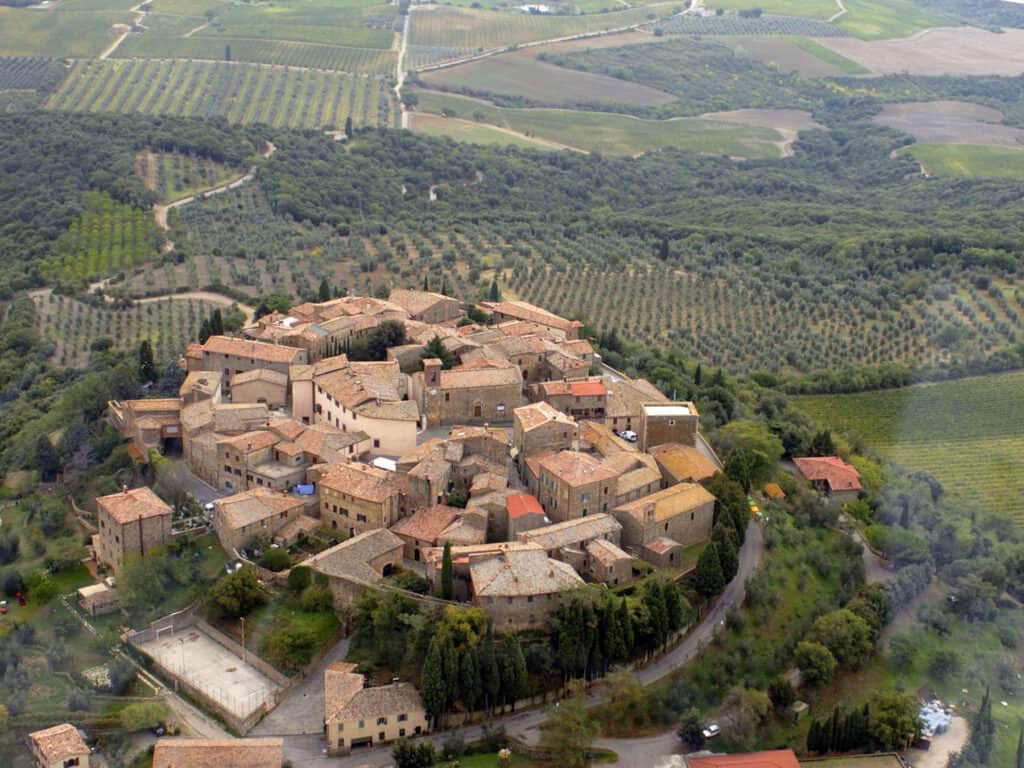
There are many hamlets or smaller villages under the same municipal jurisdiction, the “Comune di Montalcino”. They are part of the puzzle of the variegated territory of Montalcino. In these places, you can still breathe in the air of a Tuscany that almost no longer exists with its very few tourists, the elderly chatting outside their houses and children freely playing outside. Remember that also some of the best restaurants are in these villages or in the countryside.
Among the most well-known are Poggio alle Mura, Sant’Angelo in Colle, Castelnuovo dell’Abate, Castiglion del Bosco, Tavernelle, and Torrenieri.
